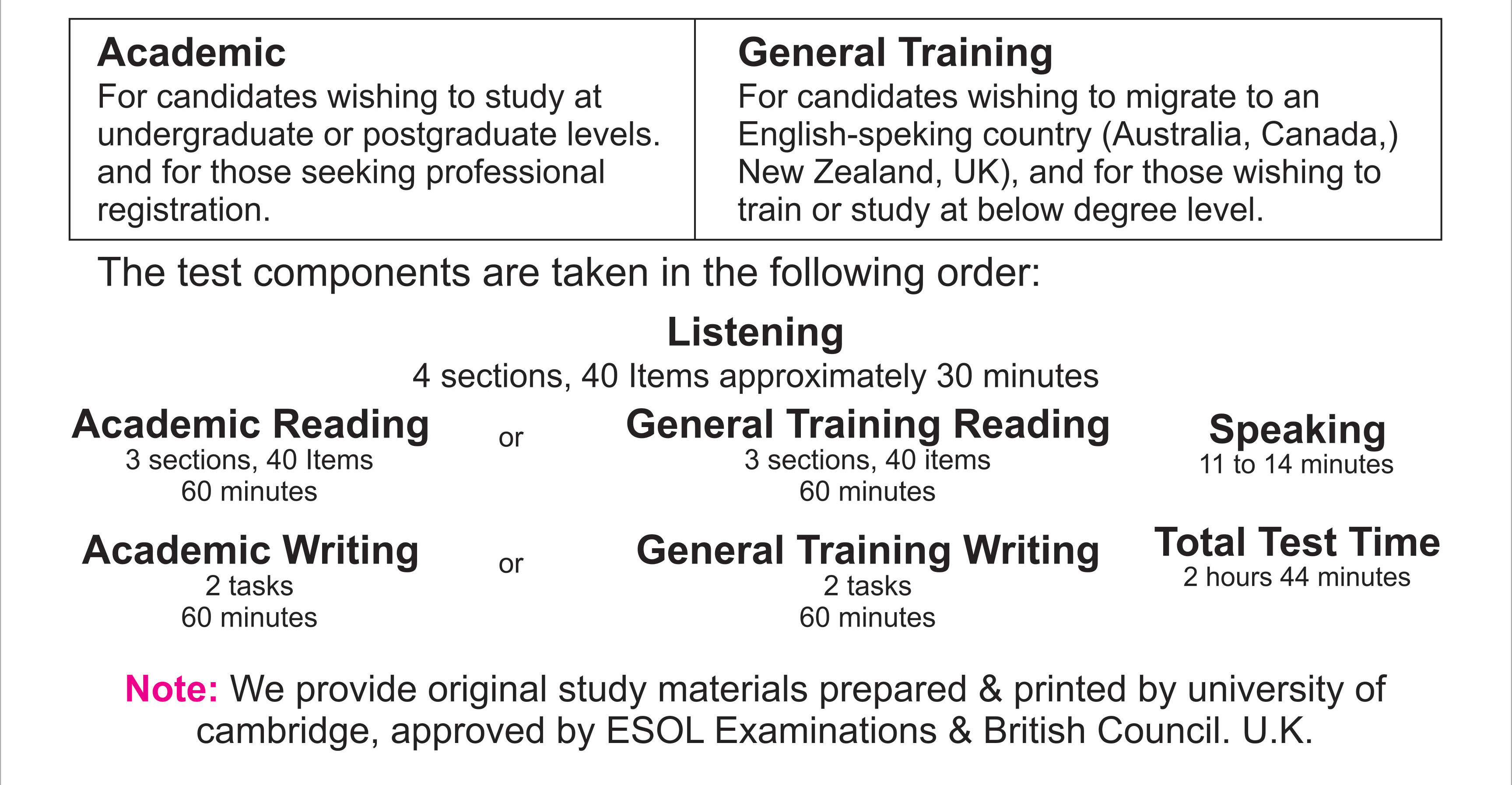
Introduction
It's a matter of great honour & privilege that Howard Institute of English has started a training Course Of IELTS/PTE & TOEFL in U.P. & Delhi NCR. The International English Language Testing System (IELTS) is widely recognized as a reliable means of assessing the language ability of candidates who need to study or work where English is the language of communication. These Practice Tests are designed to give future IELTS candidates an idea of whether their English is at the required level.
IELTS is owned buy three partners, the University of Cambridge ESOL Examinations, the British Council and IDP Education Pty Limited (through its subsidiary company, IELTS Australia Pty Limited)
WHAT IS THE TEST FORMAT?
IELTS consists of four components. All candidates take the same Listening and Speaking tests. There is a choice of Reading and Writing tests according to whether a candidate is taking theAcademic or General Training module.

HOW IS IELTS SCORED
IELTS results are reported on a nine-band scale, In addition to the score for overall language ability, IELTS provides a score in the form of a profile for each of the four skills (Listening, Reading, Writing ans Speaking). These scores are also reported on a nine-band scale. All scores are recorded on the Test Report Form along with details of the candidate's nationality, first language and date of birth. Each Overall Band Score corresponds to a descriptive statement which gives a summary of the English language ability of a candidate classified at that level. The nine bands and their descriptive statements are as follows:
9. Expert User - Has fully operational command of the language: appropriate, accurate and fluent with complete understanding.
8. Very Good Use - Has fully operational command of the language with only occasional unsystematic inaccuracies and inappropriacies.
7. Good User-Has operational command of the language, though with occasional unsystematic inaccuracies and misunderstanding in some situations.
6. Competent User - Has generally effective command of the language despite some inaccuracies, inappropriacies and misunderstandings.
5. Modest User - Has partial command of the language, coping with overall meaning in most situations, though is likely to make many mistakes.
4. Limited Use - Basic competence is limited to familiar situations. Has frequent problems in understanding and expression. Is not able to use complex language.
3. Extremely User - Conveys and understands only general meaning in very familiar situations. Frequent breakdown in communication occur.
2. Intermittent Use - No real communication is possible except for the most basic information using isolated words or short formulae in familiar situations and to meet immediate needs.
1. Non Use - Essentially lies no ability to use the language beyond possibly a few isolated words.
0. Did not attempt the test - No assessable information Provides.

